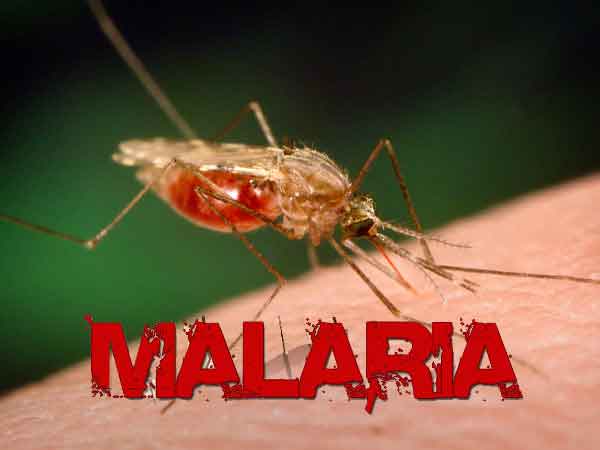Previous episodes of AFIDEP’s End Malaria webinar series, hosted by its Platform for Dialogue and Action on Health Technologies in Africa, established that the journey towards eliminating malaria faces not only a host of challenges and threats but also opportunities that, if well integrated into current intervention efforts, Africa and the world can eliminate malaria. One of these opportunities is leveraging emerging health technologies in malaria control. This blog explores various innovative approaches and technologies that hold promise to revolutionise malaria control in Africa – vaccines, monoclonal antibodies, gene drives and artificial intelligence.
Vaccines
The development of an effective malaria vaccine has long been a goal in the fight against the disease. The World Malaria Report 2022 notes that significant progress has been made in research and development since the initial release of the malaria vaccine Preferred Product Characteristics (PCCs) in 2014. After a decades-long journey to create a vaccine, the World Health Organization (WHO), in October 2021, recommended the first malaria vaccine, RTS,S/AS01, to be given to children from age 5 months in moderate-to-high transmission settings to curb malaria infections.
The RTS,S/AS01 demonstrated effectiveness as a P. falciparum malaria vaccine during phase 3 clinical trials, proving to be at least as efficient as seasonal malaria chemoprevention in children while maintaining a satisfactory safety and tolerability record. There are a number of malaria vaccines currently in clinical development that targets different phases of the parasite’s life cycle, including its presence in the liver and the blood.
Speaking on the deployment of the vaccine in Kenya, Dr Rose Jalango, Head of Kenya’s National Vaccines and Immunization Program at the Ministry of Health, highlighted that approved malaria vaccines are best deployed through subnational immunisation programmes, focusing on areas with a high burden of the disease, to ensure widespread and targeted availability. In Kenya, the vaccine is delivered through the Kenya Expanded Programme on Immunization infrastructure in efforts to ensure broader access to immunisation.
Monoclonal antibodies
Monoclonal antibodies have emerged as tools to treat cancer, autoimmune and inflammatory disorders. Clinical trials underway for malaria have shown promising results, demonstrating their potential efficacy in reducing infection rates. These antibodies are engineered to target specific components of the malaria parasite, such as proteins on the surface of infected red blood cells, to neutralise the parasite, prevent its replication, and potentially reduce disease severity.
Dr Neville Kisalu, Program Advisor at PATH’s Center for Vaccine Innovation and Access, noted that different emerging tools for malaria control face their own unique challenges. For monoclonal antibodies, the high cost of production requires developing cost-effective production methods and ensuring accessibility for the populations most affected by malaria. Nevertheless, they could serve as complementary measures in malaria interventions, for instance, passive immunisation with monoclonal antibodies could supplement vaccines, especially for seasonal malaria immunoprevention.
Gene drives
Gene drive technology encompass processes in which an organism is engineered to bias the inheritance of desired traits from parent to offspring through sexual reproduction. The process allows for the rapid spread of desirable genetic traits through generations. In the context of malaria control, scientists are exploring gene drive technology to engineer mosquitoes with reduced ability to transmit the malaria parasite (population replacement), or to reduce the overall malaria mosquito population (population suppression).
Dr Brian Tarimo, Research Scientist at Ifakara Health Institute, noted that the promise of gene drive technology is that it could transcend the logistical challenges other malaria control tools face. He, however, emphasised that this promise needs to include risk assessments, regulatory mechanisms, and community engagement if it is to be deployed as a complementary tool for malaria elimination.
Artificial intelligence
Lastly, artificial intelligence (AI) is increasingly being leveraged in various fields of healthcare, and malaria control is no exception. AI technologies, such as machine learning and data analytics, can play a crucial role in predicting malaria outbreaks, facilitating drug discovery, and improving diagnostic accuracy. Further, AI-powered mobile applications can identify malaria hotspots and optimise interventions for maximum impact.
Artificial intelligence in malaria control and elimination can serve as an enabler for current and emerging tools by providing cost and time savings for more effective deployment of interventions, as explained by Aloyce Urassa, Chairperson of ALMA’s Youth Advisory Council.
Challenges and future directions
Despite the immense promise of these technologies to eliminate malaria, several challenges need to be addressed for their successful deployment in malaria-endemic regions. These include increasing capacity for research and development, reducing the cost of production, and creating robust healthcare infrastructure to facilitate their distribution and administration.
In his keynote speech, Dr Fredros Okumu, Director of Science at the Ifakara Health Institute, emphasised that transforming malaria control requires building local leadership for public health research and practice. He further underscored that it is crucial to keep the private sector and manufacturers engaged in developing and improving control strategies. Collaboration between research and production mechanisms can lead to the development of new tools and technologies that are more effective and suitable for the African context.
Another prerequisite to transforming malaria control through emerging technologies, as highlighted by Dr Okumu, is improving the quality and use of data at national and subnational levels. Currently, many countries rely heavily on global data, and a more data-driven approach within countries can allow them to tailor their malaria responses to specific local contexts.
In conclusion, while some of these technologies show promise as standalone interventions, their true potential lies in their integration with existing malaria control measures; deploying them alongside frontline tools and strategies can create a comprehensive and multifaceted approach to malaria elimination. The synergy between these interventions can maximise the impact of malaria control efforts and accelerate progress towards eliminating the disease.
Read summaries of the previous webinars:
Webinar 1 Zero Malaria Is Possible: Ending the Malaria Burden in Africa
Webinar 2 Navigating Africa’s Journey to Malaria Elimination: Threats and Opportunities
Webinar 3 Closing the Gap in Financing Malaria Control Strategies




